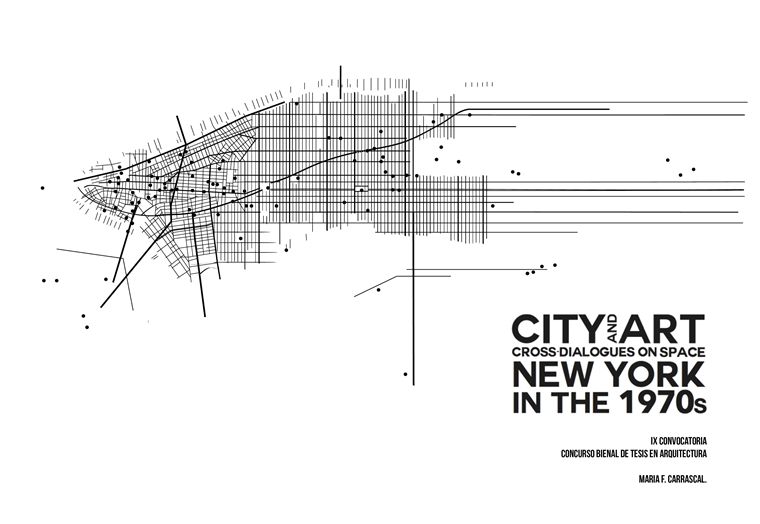“A void
Once a store, a church, an old red barn, a hall
Gone—left only empty walls
Decaying light
A Dream
In search of space
Arms to spread
Life to share
A Void No More.”
P.J. Gibson. Dealing with space, 1975.1
The brochure for the artistic event from which the Institute for Art and Urban Resources was born read, “By allowing its artistic community involvement in urban landscape, disused and abandoned areas can be meaningful space.” 2 At the turn of the 1960s, certain art organizations stood out as providers of “urban resources” for the practice of art throughout the emblematic city of New York, promoting singular connections with the obsolete urban environment. “Urban curatorship,” “public art,” “creative time,” and “artistic playscape” were some of the concepts relating to the city context derived from the activity of such associations. The involvement with the city of the 1960 generation of artists was to culminate in the formation of unique structures aiming to research, enquire, record, and recycle neglected urban space, all of which are the object of study of this dissertation. How could they take advantage of the obsolete urban landscape? What was the search and decision-making process as regards urban contexts like for these art organizations? What was the architecture of this art –the alternative spatial form beyond conventional cultural confinements– like? And, even more relevant to this field of discipline: what can be inferred from their procedures and practices to improve an obsolete cityscape?
This thesis focuses on the formal relationship between New York City and 1970s art. During this period, including its diffuse beginnings in the 1960s and its long-drawn-out conclusion in the 1980s, artists participated in an expansion of its field of action which was to reach the soil, subsoil and sky of this city. The wide variety of art forms and creative procedures emerging in this decade were related to the “place”. Certainly, the setting for numerous artistic practices was the entirety of the urban landscape. The high porosity of this urban stage, together with the artists’ need for workspace and living space at the time, was to boost the specific dialogue addressed here between city and art. In this regard, the thesis first argues the particularity of the New York cityscape in the 1970s, symbolically obsolescent due to the creative-destructive nature of the city and economically obsolescent due to two consecutive fiscal crises. The previous suburbanization trend and the intense urban renewal processes affecting entire neighborhoods and districts, together with deindustrialization, outlined the decadence of this urban scenario. Specific analyses are carried out on the context and the geographical boundaries of art are also studied. In addition to assessing procedures, this work expounds on how the artists and art organizations of this period, acting almost as researchers of urban obsolescence, provided the first creative responses to the urban situation.
While the case of the “art district” and the individual incursions into the urban fabric had been largely addressed (by Lucy R. Lippard, Rosalind Krauss, Lawrence Alloway and Julie Ault, as well as by Pilar Parcerisas and Iria Candela), this research put together and analyzed the specific case of lesser known organizations which took on the specific role of detecting and managing neglected and vacant space in the city. The history of the origins of the Institute for Art and Urban Resources (IAUR), the Public Art Fund, Creative Time, and the Athena Foundation has revealed how artists created specific strategies, plans and projects to connect with the cityscape of this period. This study focuses on their symbolic procedures and urban tactics used for a temporal “artistification” of obsolete urban spaces which, in a reverse reading, are also presented as strategies of urban improvement through art.
According to the above, “space” is the unit measure to trace the activity of such organizations in this research. In view of this and in order to conduct the research on the achievements of these art structures, a collection of urban resources, “workspaces”, “public spaces”, “collective”, and “waste spaces” is used here to present their artistic life –the art as life of that period.
__
1. Dealing with space, National Endowments for the Arts (Media Associates Inc.: Washington D.C., 1975).
2. From annotated flier for The Brooklyn Bridge Event, New York, NY, May 24, 1971. (New York: The Museum of Modern Art Archives, MoMA PS1, 2202, 2013).





